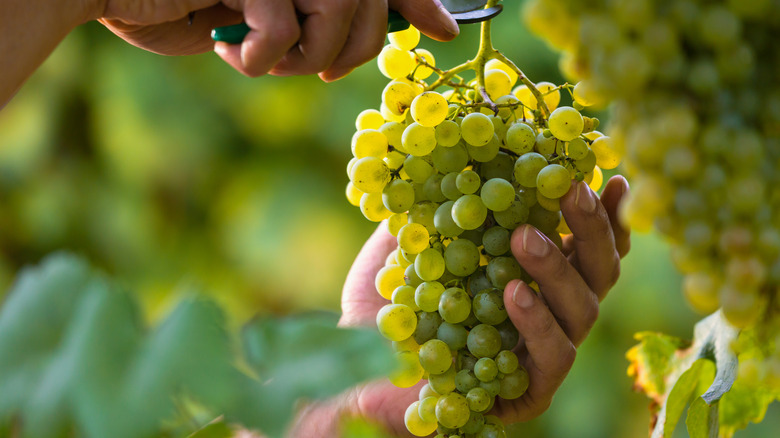How To Grow Sweet, Seedless Grapes In Your Backyard
Grapes are one of the tastiest snacks out there, and while you may have assumed they aren't practical to grow at home, that's likely not the case. Delicious seedless table grapes (Vitis vinifera, Vitis labrusca, or hybrids of the two) actually grow quite well in many home gardens in the United States and Canada. While some regions have better grape-growing conditions than others, as long as you pick the right cultivar for your zone, give your vines some support and pruning, and provide them with plenty of sunshine, you should be growing your own seedless grapes in no time.
There are a wide variety of seedless grape plants available, from 'Thomcord' which thrives in zones 5 through 9 to 'Somerset' which can grow in regions as cold as zone 4. It isn't just purple (or red or black) seedless grapes that you can grow at home either. Green cultivars like 'Lakemont', which is hardy in zones 5 through 8, are also readily available. Once you've picked the perfect variety of table grape for you, all that's left is making sure you provide it with ideal growing conditions.
Caring for grape vines
While it could take many years to grow grapes from seeds, seedless grape vines are propagated from cuttings and are often grafted onto rootstock. These plants often bear fruit only a year or two after planting. To give your grapes the best chance of producing fruit quickly and growing well, be sure to place them in a full sun location. You should also make sure the soil has a pH between 5 and 6 and is well draining. While you may be tempted to add significant amounts of mulch around the vines as you do with many other plants, grapes often do better with little to no mulch. Many people opt to plant their grapes alongside asparagus.
Be sure to keep your grapes well watered, as young vines often need around an inch of water per week. Once they are mature and well established, your vines should require little to no supplemental watering. A balanced fertilizer is also beneficial to add to your soil in most cases. Just be sure to check the health of your soil first. By their third year your grapes could require as much as 1½ pounds of fertilizer each spring. Of course, one of the most important things to keep in mind with grapes is that they are vines. That means you need to both provide them with a trellis or some other type of support and stay on top of pruning them. The best way to prune grapes is to have a single lead cane.

